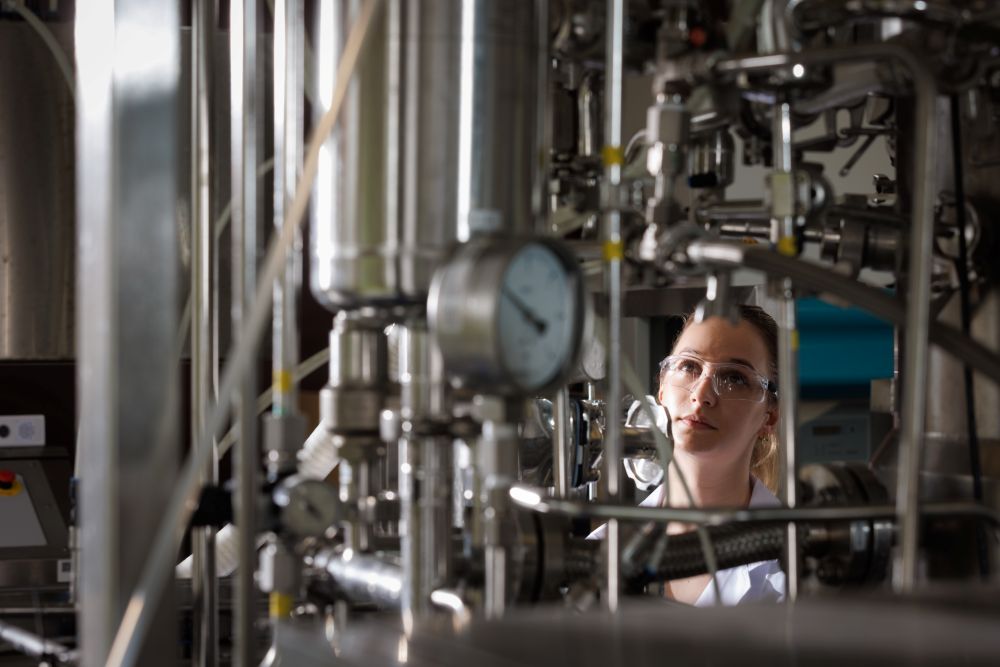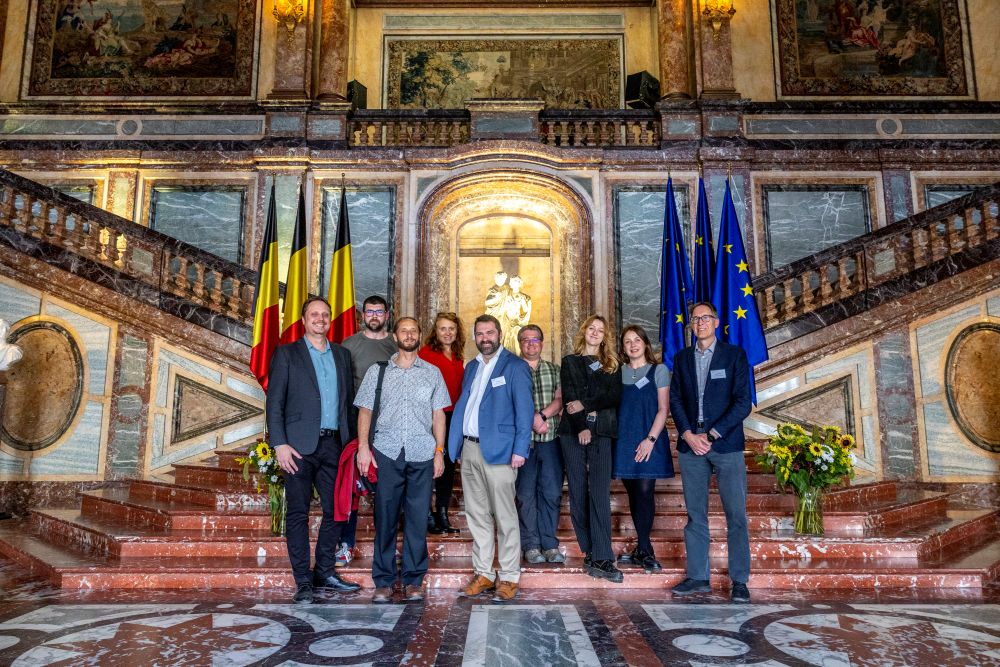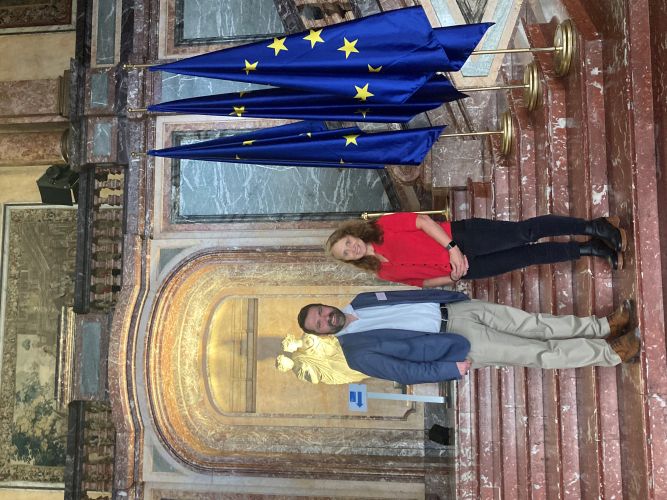Harnessing synthetic biology for a sustainable future

Synthetic biology is rapidly emerging as one of the world’s most transformative and disruptive technologies, with the potential to reshape industries from healthcare and agriculture to forestry and bio-based materials. In New Zealand, organisations like the Bioeconomy Science Institute are helping drive research, innovation and policy change to build a more sustainable and resilient bioeconomy.
Globally, there is growing pressure to reduce carbon emissions, cut waste and transition away from fossil fuels toward a circular, sustainable economy. Alec Foster, bioproducts portfolio lead at the Bioeconomy Science Institute, is at the forefront of those efforts in New Zealand, overseeing the development of sustainable processes and renewable resources that can drive the country’s economic growth.
“The world’s heavy dependence on fossil-based oil to produce everyday products is no longer sustainable or environmentally friendly,” says Alec.
“Synthetic biology is the key to creating these materials, offering powerful tools such as engineered microbes, enzymes and bio-manufactured products that can replace or improve traditional chemical and industrial processes. Whether it’s biofuels, bioplastics, specialty chemicals or pharmaceuticals, using genetically engineered microbes to produce them efficiently is one of the most important pathways forward.”
Synthetic biology applies engineering principles to biology, using standardised genetic “parts” like Lego pieces to design and modify organisms. By assembling and reconfiguring these components, scientists can create microbes that produce useful products from bio-based materials to specialty chemicals in a more predictable and scalable way.
Building a sustainable bioeconomy
Alec has recently returned from Europe, where he led the New Zealand delegation alongside professor of chemical biology Emily Parker from Victoria University of Wellington. Sponsored by the Ministry of Business, Innovation and Employment (MBIE), the trip aimed to strengthen partnerships in synthetic biology and biotechnology, and to showcase how quickly the field is evolving globally. You can read a bit more about this trip in Victoria University of Wellington’s pānui.

“We’re particularly interested in learning from Europe because their biofoundries are among the most advanced in the world,” says Alec.
“These facilities are highly automated laboratories that use robotics, data and artificial intelligence (AI) to design, build and test new processes on a large scale. Instead of manually adding samples one by one, a biofoundry can process hundreds at once, each representing a different genetic variation.”
This high-throughput, automated approach illustrates the essence of modern synthetic biology.
“True synthetic biology applies engineering principles - standardisation, automation and scalability,” Alec adds.
“When processes are standardised, they can be automated; when they’re automated, they can be scaled up, just like a production line. That transforms biological research from small-scale, manual experiments into industrial-scale innovation.”
At the Bioeconomy Science Institute, synthetic biology is being used to turn New Zealand’s biomass waste from dairy, forestry and agriculture into valuable products through fermentation. Researchers are developing a range of bio-based materials, including bioplastics, flavours, fragrances and specialty proteins.
“Most labs can only modify a few common microbes,” says Alec. “But we’re developing new genetic toolkits that let us engineer many more - especially those that naturally grow on waste, like dairy or gas by-products. Instead of forcing a microbe to eat something it doesn’t like, we work with species that already thrive on waste and reprogramme them to make useful products.”
Synthetic biology isn’t just about efficiency or economic growth; it’s also about creating positive environmental outcomes.
“Historically, one challenge has been that the benefits of biotech haven’t always been visible to the public,” says Alec. “But now we’re starting to see innovations that directly benefit the environment. For example, engineering trees to grow faster could capture more carbon dioxide, and redesigning processes to reduce waste creates far more sustainable outcomes.”
Later this month, Alec will speak at the Synthetic Biology Australasia Conference in Wellington, focusing on translating research into real-world outcomes.
“I’ll be talking about bringing synthetic biology into the real world - how we make it viable and how we fail fast,” he says. “A big part of synthetic engineering isn’t just making genetic modifications because we can, but ensuring those changes lead to meaningful outcomes.”

Innovation, regulation and scale
Currently, under the Hazardous Substances and New Organisms (HSNO) Act 1996, any organism with an added or edited gene is classified as genetically modified (GMO) and faces strict controls, even if the genetic change could occur naturally. This has made research and commercialisation slow, expensive, and largely confined to labs.
The Gene Technology Bill (2024), now before Parliament, aims to modernise definitions and streamline oversight. Alec has been advising the government as part of the technical advisory group shaping the new framework.
“Fermentation is a great example,” he says. “It’s the process that turns synthetic biology from an idea into something tangible. But in New Zealand, any fermentation using genetically modified organisms is largely confined to the lab, and you just can’t fit a 100,000-litre commercial fermenter in there. It’s not practical. The new Bill is a critical enabler - it modernises the rules so we can protect the environment and still allow innovation to thrive.”
The Bioeconomy Science Institute is also investing directly in scaling capability. A 1,000-litre product-scale fermenter, due to arrive in 2026, will allow production of hundreds of kilogrammes of material - a major leap from the current 100-litre capacity. Alec is also supporting the BioFactory imitative, a $63 million facility designed to scale to 10,000-litre capacity.
“This is a key milestone for unlocking investment,” says Alec. “Investors want to see products at a near-commercial scale, not just grams in the lab. Producing larger volumes shows what’s possible and signals that the industry is ready to grow.”
The New Zealand Government has also committed to establishing the New Zealand Institute for Advanced Technology (NZIAT), which lists synthetic biology among the breakthrough technologies it will support.
“This level of national investment shows real confidence in the potential of synthetic biology,” Alec says. “It’s a recognition that this technology can deliver sustainable, high-value solutions across multiple sectors of the economy.”
With momentum building and collaboration deepening, New Zealand’s synthetic biology community is entering a stage focused on scaling up and proving what’s possible.
“We still have to turn innovation into tangible outcomes,” says Alec. “Synthetic biology and fermentation let us do that sustainably. It’s a disruptive technology, especially to New Zealand's primary industries, that’s redefining how we grow, make and use resources across a diverse range of industries.”
